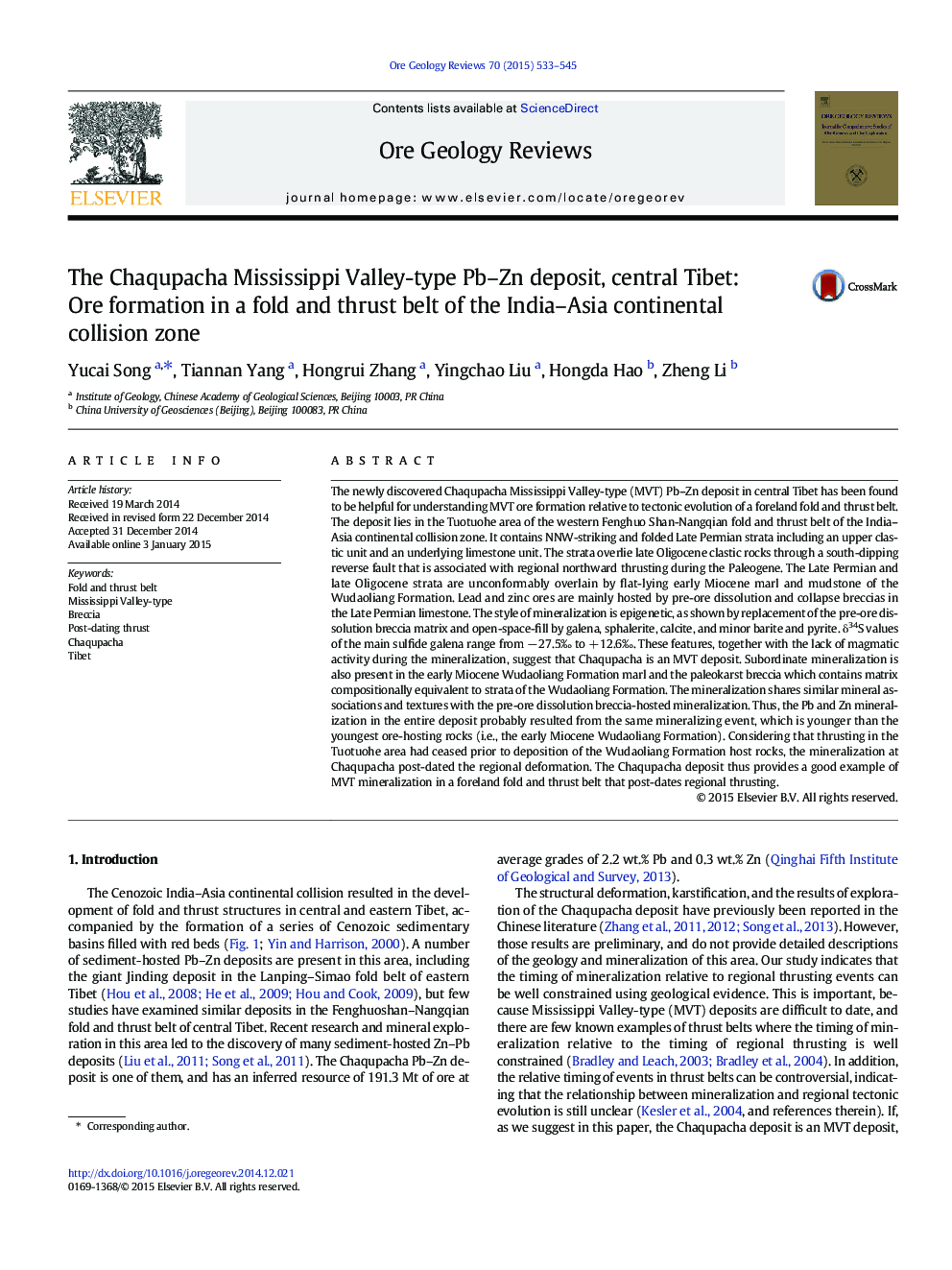| Article ID | Journal | Published Year | Pages | File Type |
|---|---|---|---|---|
| 4696994 | Ore Geology Reviews | 2015 | 13 Pages |
The newly discovered Chaqupacha Mississippi Valley-type (MVT) Pb–Zn deposit in central Tibet has been found to be helpful for understanding MVT ore formation relative to tectonic evolution of a foreland fold and thrust belt. The deposit lies in the Tuotuohe area of the western Fenghuo Shan-Nangqian fold and thrust belt of the India–Asia continental collision zone. It contains NNW-striking and folded Late Permian strata including an upper clastic unit and an underlying limestone unit. The strata overlie late Oligocene clastic rocks through a south-dipping reverse fault that is associated with regional northward thrusting during the Paleogene. The Late Permian and late Oligocene strata are unconformably overlain by flat-lying early Miocene marl and mudstone of the Wudaoliang Formation. Lead and zinc ores are mainly hosted by pre-ore dissolution and collapse breccias in the Late Permian limestone. The style of mineralization is epigenetic, as shown by replacement of the pre-ore dissolution breccia matrix and open-space-fill by galena, sphalerite, calcite, and minor barite and pyrite. δ34S values of the main sulfide galena range from − 27.5‰ to + 12.6‰. These features, together with the lack of magmatic activity during the mineralization, suggest that Chaqupacha is an MVT deposit. Subordinate mineralization is also present in the early Miocene Wudaoliang Formation marl and the paleokarst breccia which contains matrix compositionally equivalent to strata of the Wudaoliang Formation. The mineralization shares similar mineral associations and textures with the pre-ore dissolution breccia-hosted mineralization. Thus, the Pb and Zn mineralization in the entire deposit probably resulted from the same mineralizing event, which is younger than the youngest ore-hosting rocks (i.e., the early Miocene Wudaoliang Formation). Considering that thrusting in the Tuotuohe area had ceased prior to deposition of the Wudaoliang Formation host rocks, the mineralization at Chaqupacha post-dated the regional deformation. The Chaqupacha deposit thus provides a good example of MVT mineralization in a foreland fold and thrust belt that post-dates regional thrusting.
